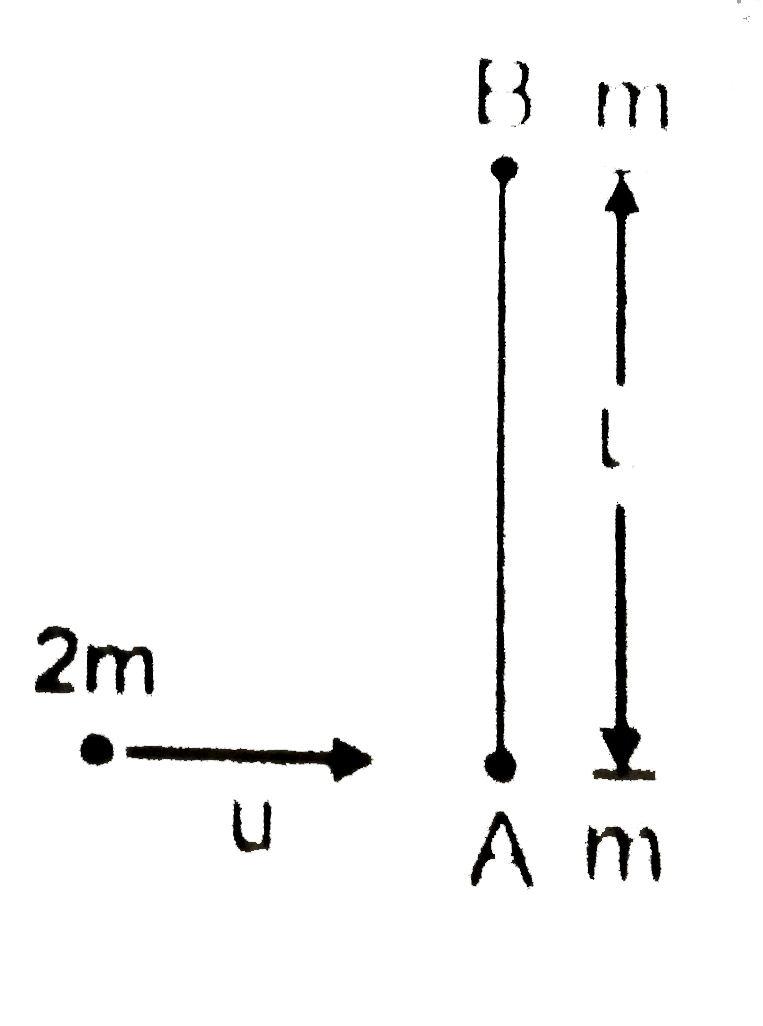Speed bumps are being placed at 20-foot intervals along a road 1015 feet long. If the first speed bump is placed at one end of the road, how many speed bumps are needed?
49
50
51
52
The correct Answer is:C
Step by step video, text & image solution for Speed bumps are being placed at 20-foot intervals along a road 1015 feet long. If the first speed bump is placed at one end of the road, how many speed bumps are needed? by Maths experts to help you in doubts & scoring excellent marks in Class 12 exams.
Similar Questions
Five balls are placed one after the other along a straight line as shown in the figure. Initially, all the balls are at rest. Then the second ball has been projected with speed v0 towards the third ball. Mark the correct statements, (Assume all collisions to be head-on and elastic.)
 View Solution
View SolutionA strip of wood of mass M and length l is placed on a smooth horizontal surface. An insect of mass m starts at one end of the strip and walks to the other end in time t, moving with a constant speed. The speed of the insect as seen from the ground is
View Solution
Knowledge Check
- Question 1 - Select One
In the qualifying rounds for a race , Rusty and Date drive theif cars around a 6,000 - foot oval track . Rusty and Dale each drive 8 laps in the qualifying rounds in lanes of identical length .
on day one of the qualifying rounds , Rusty and Dale start from the same point , but their cars are reversed and each drives opposite ways , Rusty drives at a constant speed that is 8 feet per second faster than dale's constant speed Rusty passes Dale for the first time in 150 seconds . Rusty drives at a constant rate of how many feet per second ?A16B20C24D32
There is a pair of fixed, parallel rails of negligible resistance in a horizontal plane, at a distance of L = 10 cm. The rails are connected, at one of their ends to an ideal battery of EMF 0.5 V, as shown in the figure. The system is placed in a vertically downward and perpendicular magnetic field of magnetic induction B = 1T. A metal rod of resistance R=10Ω is placed perpendicularly on the rails. The rod placed perpendicularly on the rails. The rod and rails are frictionless. The magnitude of force, which is to be exerted on the rod in order to move it with a constant speed of order to move it with a constant speed of 1ms−1 in the direction shown, is
 View Solution
View Solution
Two small balls A and B, each of mass m, are joined rigidly at the ends of a light rof of length L. they are placed on a frictionless horizontal surface another ball of mass 2 m moving with speed u towards one of the ball and perpendicular to the length of the rod on the horizontal frictionless surface as shown int he figure. if the coefficient of restitution is 1/2 then the angular speed of the rod after the collision will beView SolutionIn a potato race 20 potatoes are placed in a line at intervals of 4meters with first potato 24metres from the starting point. A constant is required to bring the potatoes back to the starting place one at a time. How far would he run in bringing back all the potatoes?
View SolutionIn a potato race 20 potatoes are placed in a line at intervals of 4meters with first potato 24metres from the starting point. A contestant is required to bring the potatoes back to the starting place one at a time. How far would he run in bringing back all the potatoes?
View SolutionThe radius of the bump on a road is r. What force does the road exert on a car of mass m when the car passes the highest point on the bump ? Calculate the maximum speed with which the car can pass the highest point before losing contact wtih the road ?
View SolutionA car is moving on a straight road covers one third of the distance with a speed of 20 km/h and the rest with a speed of 60 km/h. The average speed of the car is
View Solution
As shown in the figure above, a lifeguard sees a struggling swimmer who is 40 feet from the beach. The lifeguard runs 60 feets along the edge of the water at a speed of 12 feet per second. He pauses for 1 seconds to locate the swimmer again, and then dives into the water and swims along a diagonal path to the swimmer at a speed of 5 feet per second. How many seconds go by between the time the lifeguard sees the struggling swimmer and the times he reaches the swimmer?View Solution

